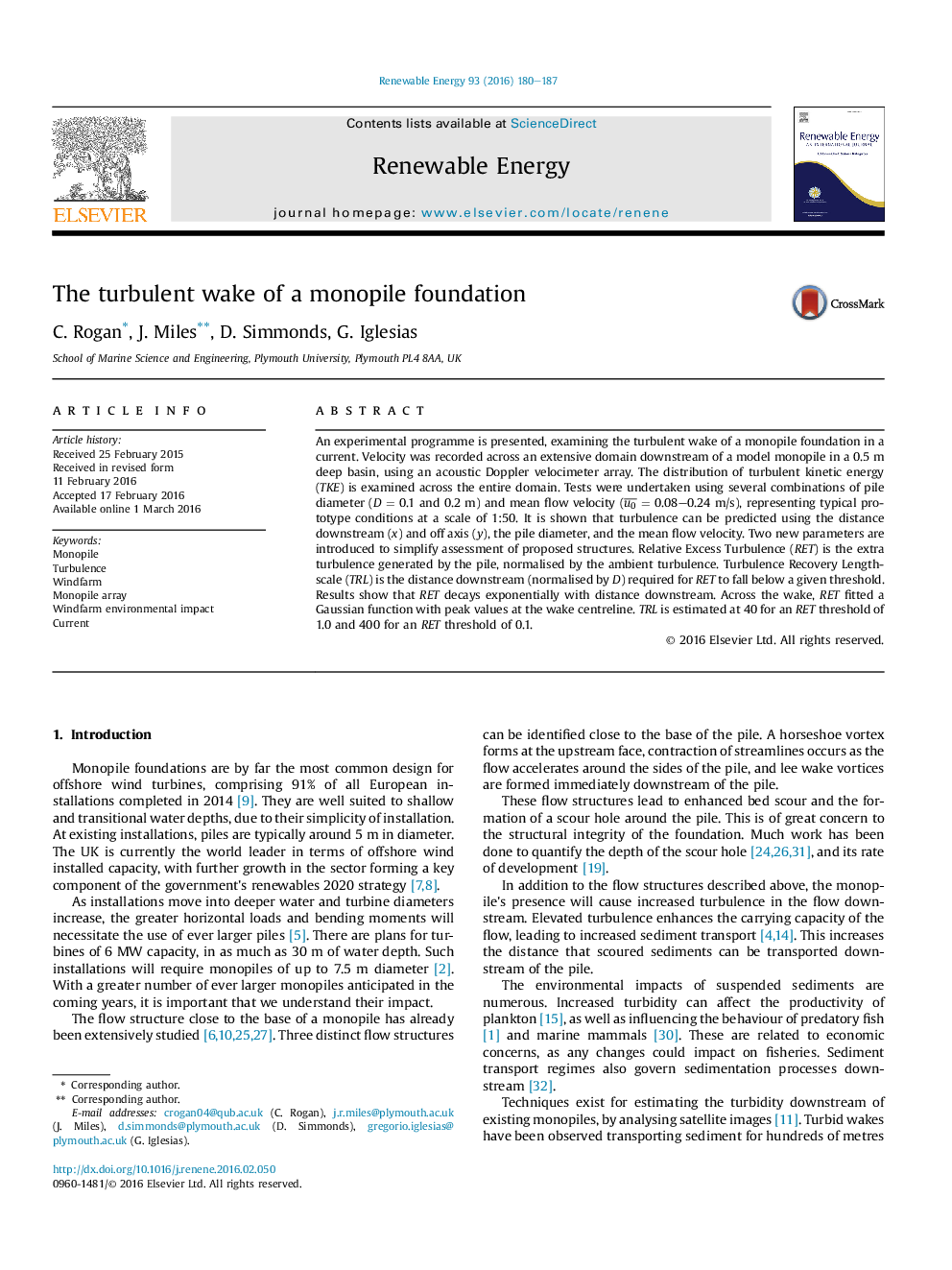| Article ID | Journal | Published Year | Pages | File Type |
|---|---|---|---|---|
| 299759 | Renewable Energy | 2016 | 8 Pages |
•Distribution of turbulence was measured in the wake of a model monopile foundation.•Turbulence decays exponentially with distance downstream of the pile.•Turbulence can be normalised by pile diameter and mean flow velocity squared.•Two new parameters are introduced to characterise the distribution of turbulence.•Results suggest that the effect on turbulence is small at typical pile spacing in offshore wind farms.
An experimental programme is presented, examining the turbulent wake of a monopile foundation in a current. Velocity was recorded across an extensive domain downstream of a model monopile in a 0.5 m deep basin, using an acoustic Doppler velocimeter array. The distribution of turbulent kinetic energy (TKE) is examined across the entire domain. Tests were undertaken using several combinations of pile diameter (D = 0.1 and 0.2 m) and mean flow velocity (u0¯ = 0.08–0.24 m/s), representing typical prototype conditions at a scale of 1:50. It is shown that turbulence can be predicted using the distance downstream (x) and off axis (y), the pile diameter, and the mean flow velocity. Two new parameters are introduced to simplify assessment of proposed structures. Relative Excess Turbulence (RET) is the extra turbulence generated by the pile, normalised by the ambient turbulence. Turbulence Recovery Lengthscale (TRL) is the distance downstream (normalised by D) required for RET to fall below a given threshold. Results show that RET decays exponentially with distance downstream. Across the wake, RET fitted a Gaussian function with peak values at the wake centreline. TRL is estimated at 40 for an RET threshold of 1.0 and 400 for an RET threshold of 0.1.
